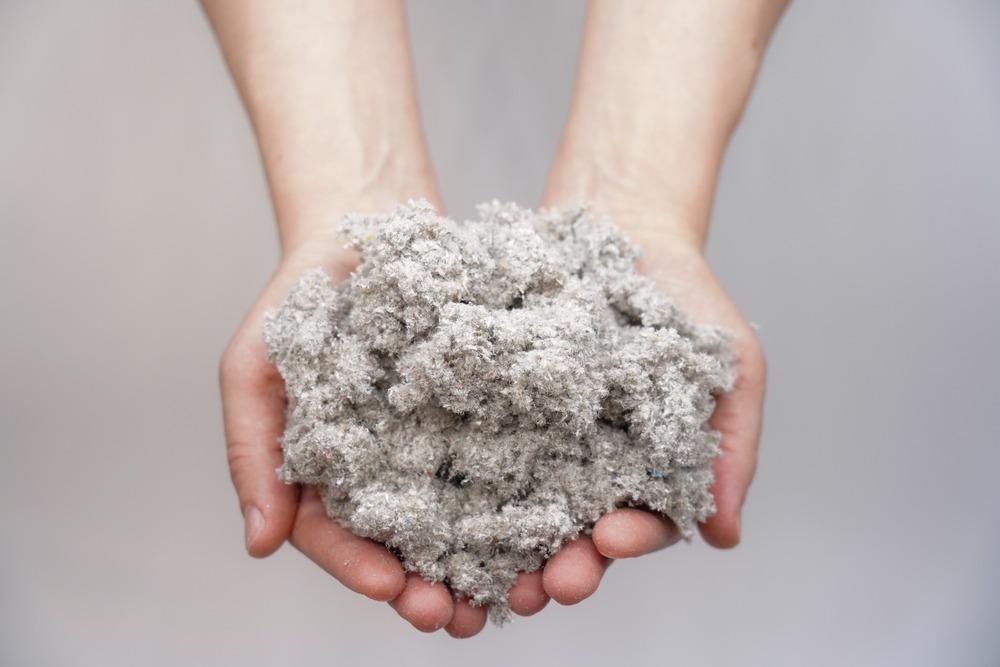A new publication in the journal ACS Applied Polymer Materials describes a simple and large-scale preparation technique for producing high-performance cellulose bioplastic films made from chemically compatible dual-crosslinked carboxymethylated cellulose fibers (CMFs).

Study: Large-Scale Manufacture of Recyclable Bioplastics from Renewable Cellulosic Biomass Derived from Softwood Kraft Pulp. Image Credit:Marco Lazzarini/Shutterstock.com
The accumulation of synthetic polyester on the planet has posed a danger to the ecology. Because of its advantageous recyclability, optical clarity, and availability of resources, cellulose film has recently become one of the most appealing alternatives to displace petroleum-based polymers.
The typical methodologies for fabricating cellulose films, such as vacuum filtering and solution casting are, however, time-consuming and expensive to industrialize. Furthermore, these films still have low water resistance and mechanical properties in high humidity, making them unsuitable for real-world applications.
Cellulose: An Important Bio-Plastic
Plastics, which are made up of numerous petroleum compounds, play an essential part in human existence and industry. However, owing to their non-biodegradability and complicated sewage disposal, ever-increasing pollutants have been collecting on our planet and progressively infiltrating the food supply, creating serious health and environmental consequences.
Researchers have suggested the notion of "bioplastics" to completely replace petrochemical-based polymers to overcome such a dilemma.
Bioplastics derived from biomass materials can decrease dependency on gasoline, increase energy stability, and decrease carbon dioxide and plastic particulate pollutants.
In addition, cellulose, the most common biomass generated from trees and plants on the planet, has been broadly applied to manufacture traditional writing and paper products, as well as food and commodities wrappings.
Cellulose is a complex carbohydrate made up of hundreds or even thousands of glucose units that create a lengthy chain when they connect.
Advantages and Applications of Cellulose Derivatives
Chemically synthesized cellulose compounds, such as cellulose nanofiber (CNF), cellulose nanocrystal (CNC), and others, can be made by reacting the hydroxyl groups of cellulose with different chemicals, either partly or completely.
These cellulose compounds have been great choices for substituting petrochemical-based plastic in packaging applications, construction elements, and electrical interfaces due to their qualities of recyclable, disposable, and environmentally benign qualities.
In recent years, two primary strategies for producing cellulose-based bioplastics have received much interest: (1) inserting CNF or CNC as reinforcements into polymer matrixes to improve the thermo-mechanical characteristics of composites.
(2) Making nanocellulose-based films directly using solution molding, suction filtering, vapor deposition, and other methods.
Limitations of Nano-Cellulose Based Films
However, nanocellulose's significant attraction for water droplets may result in limited dehydration and drying effectiveness, as well as inadequate mechanical characteristics in high humidity.
Fabricating a nanocellulose-based film takes several hours or more, which is time-consuming and expensive.
Despite the growing interest in disposable nano- and/or molecular cellulose, improving operational efficiencies, mechanical properties, and aqueous durability in the area of environmentally friendly biomaterials remains a challenge.
As a result, it is crucial to establish a simple, rapid, and large-scale technique of manufacturing biomaterials from abundant renewable natural sources, in which the finished version must be structurally strong and reliable in high humidity while also being completely transparent and environmentally benign, thereby promoting bioplastics' industrial growth.
A Novel Process for Fabrication of Bio-Plastic Films
The researchers presented an effective and traditional paper production technique that can produce a robust, transparent, and water-resistant bioplastic sheet to meet these criteria.
They concentrated on the often-overlooked micron cellulose fibers, which offer more promise for large-scale industrial manufacturing.
This method entails the rapid production of CMFs and the electrostatic forces adhesion of Al3+ ions and PAE monomers onto the CMF fibers, resulting in a homogenous solution that can be readily formed into a film using traditional paper production techniques.
During the hot-pressing and drying stages, the bendable PAE plastics experience both covalent crosslinking with cellulose fibers and self-crosslinking process among PAE components.
Research Findings and Conclusion
The resulting bioplastic sheet has a good tensile strength (158.2 MPa), great water durability, increased wet toughness, better optical efficiency, and outstanding thermal reliability, among other properties.
Significantly, this CMF-based bioplastic film can be mechanically disintegrated and recycled, enabling the substance to be recycled throughout the production cycle.
Furthermore, the mechanical characteristics of the re-prepared CMF-based film employing recovered sludge were up to 145.9 MPa, which was barely reduced when compared to the initial films.
This simple, large-scale, and environmentally friendly manufacturing approach can lead to the development of a bioplastic sheet for construction and manufacturing industries.
Reference
Chunfa Lei. et al. (2022). Large-Scale Manufacture of Recyclable Bioplastics from Renewable Cellulosic Biomass Derived from Softwood Kraft Pulp. ACS Applied Polymer Materials. Available at: https://pubs.acs.org/doi/10.1021/acsapm.1c01729
Disclaimer: The views expressed here are those of the author expressed in their private capacity and do not necessarily represent the views of AZoM.com Limited T/A AZoNetwork the owner and operator of this website. This disclaimer forms part of the Terms and conditions of use of this website.